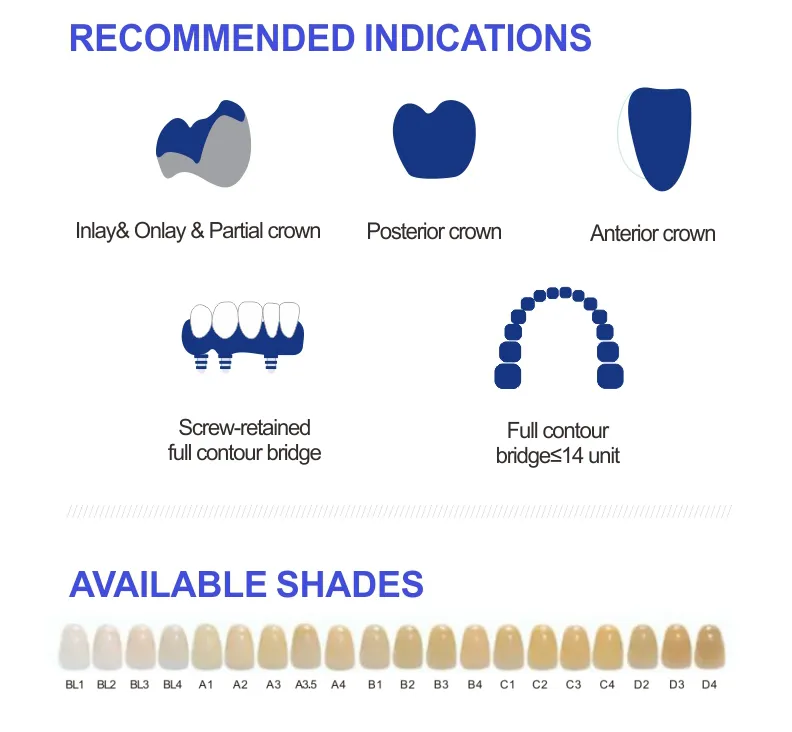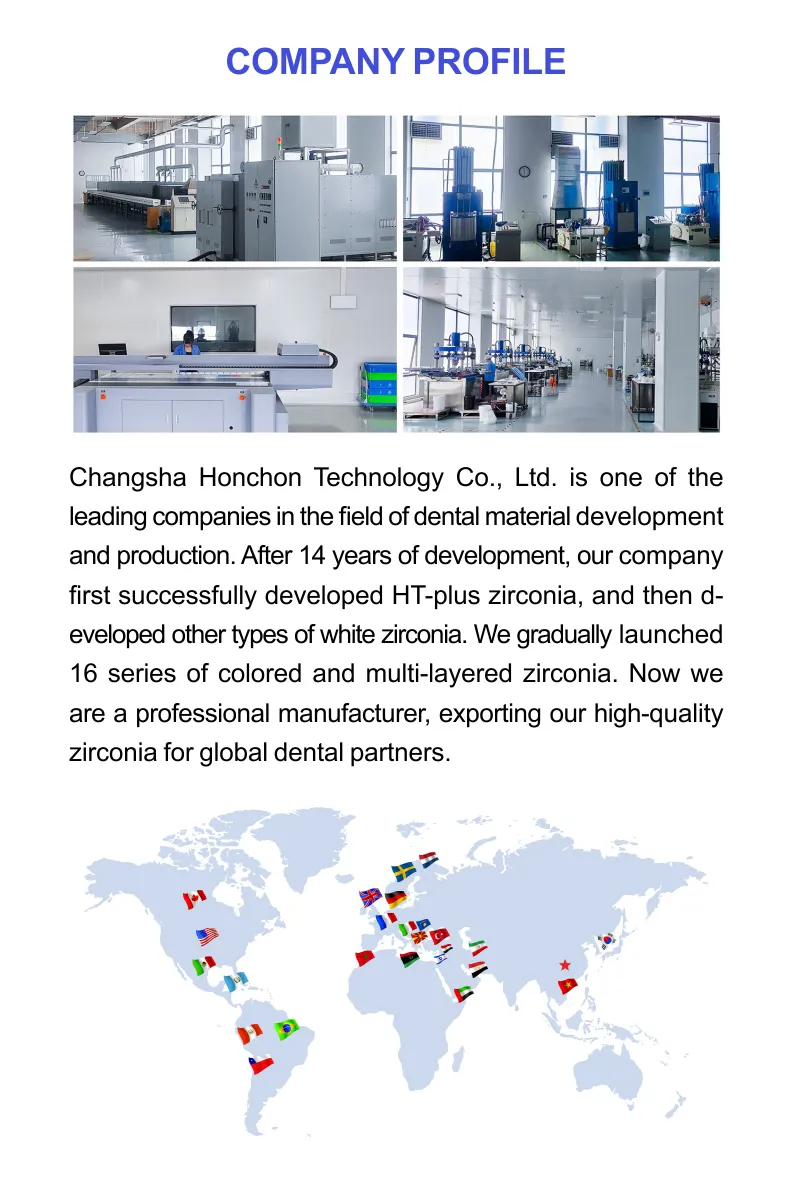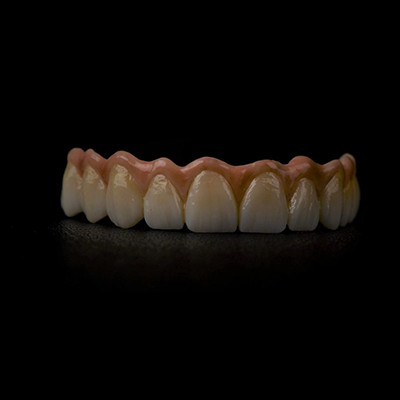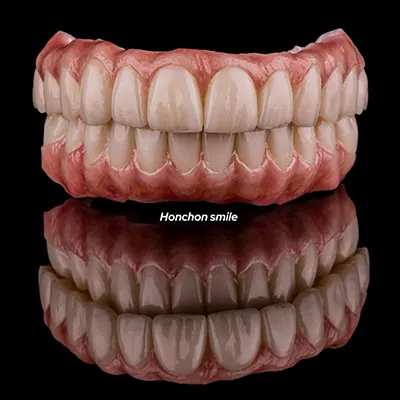Zirconia Blocks
Definition of zirconia blocks
Zirconia blocks are ceramic materials used in dentistry, primarily for the fabrication of crowns, bridges, and dental implants. They are known for their strength and aesthetics, making them a popular choice in dental restorations.
Characteristics of zirconia blocks
- High Strength: Exceptional durability.
- Excellent Transparency: Mimics the aesthetics of natural teeth.
- Stability: Maintains integrity during processing.
- Fine Granularity: Provides outstanding technical properties.
- Balanced Composition: Withstands high pressure and temperature.
- Versatility: Suitable for various dental restorations.
- Biocompatibility: Safe for human use.
- Ease of Use: Facilitates efficient processing and fabrication.
Advantages of zirconia blocks
- Exceptional strength and durability.
- High aesthetic quality: natural color matching and transparency.
- Biocompatibility: Reduces the risk of allergic reactions.
- High stability: maintains integrity during milling and sintering.
- Precision and accuracy: milled to exact dimensions.
- Diversity: applicable for various dental procedures.
- Ease of processing: reduces production time and costs.
- Wear and corrosion resistance: extends the lifespan of restorations.
- High-temperature resistance: Withstands high sintering temperatures.
- Long-term performance: reliable and durable restorations.
Designed to simulate the gradient of natural teeth, offering various aesthetic options such as ultra-transparency.
| Type |
Color Options |
Bending Strength (MPa) |
Light Transmittance (%) |
Sintering Temperature (°C) |
| 4D Pro |
Vita 16 colors + BL1/BL4 |
750 - 1200 |
43 - 57 |
1500 |
| 4D Plus |
Vita 16 colors + BL1/BL4 |
700 - 1200 |
43 - 55 |
1500 |
| 3D Plus |
Vita 16 colors + BL1/BL4 |
700 - 1050 |
45 - 57 |
1500 |
| SHT |
Vita 16 colors + BL1/BL4 |
1000 |
46 |
1500 |
| UT |
Vita 16 colors + BL1/BL4 |
700 |
49 |
1500 |
2. White Zirconia Blocks
Monolithic and high-purity with varying levels of translucency.
| Type |
Color |
Bending Strength (MPa) |
Light Transmittance (%) |
Sintering Temperature (°C) |
| HT Plus |
White |
1350 |
40 |
1530 |
| ST Plus |
White |
1350 |
40 |
1530 |
| SHT |
White |
1000 |
46 |
1450 |
| UT |
White |
700 |
49 |
1450 |
3. Colored Zirconia Blocks
Pre-colored to match tooth shades.
| Type |
Color Options |
Bending Strength (MPa) |
Light Transmittance (%) |
Sintering Temperature (°C) |
| HT PC |
Vita 16 colors + BL1/BL3 |
1350 |
40 |
1530 |
| ST PC |
Vita 16 colors + BL1/BL3 |
1100 |
43 |
1530 |
| SHT C |
Vita 16 colors + BL1/BL3 |
1000 |
46 |
1530 |
Applications of zirconia blocks
- Dental crowns and bridges: aesthetic and durable restorations.
- Implant abutments: strong connection between implant and restoration.
- Inlays and veneers: a durable alternative to traditional fillings.
- Aesthetic veneers: natural-looking cosmetic restorations.
- Full mouth reconstruction: Comprehensive smile makeovers.
- Orthodontic brackets: Aesthetic orthodontic solutions.

Production Process of zirconia blocks
The production of zirconia blocks involves several steps, including:
- Raw Material Sourcing: High-purity zirconia powder is sourced.
- Mixing: Zirconia powder is mixed with additives to enhance properties.
- Pressing: The mixture is pressed into desired shapes.
- Sintering: The pressed blocks are sintered at high temperatures to achieve desired strength.
- Machining: Blocks are milled to precise specifications.
- Quality Control: Each block undergoes rigorous testing for quality assurance.
Partnership Opportunities
We are open to collaboration with dental clinics, dental labs, and distributors. Please contact us for more information on partnership opportunities.
Factory Advantages
- Advanced production technology for high-quality zirconia blocks.
- Experienced team ensuring consistent product quality.
- Comprehensive quality control system.
- Flexible production capacity to meet diverse customer needs.
- Commitment to customer satisfaction and timely delivery.

Frequently Asked Questions
1. What is the lead time for orders?
Lead time varies based on order size but typically ranges from 1 to 4 weeks.
2. Do you offer customization?
Yes, we can customize zirconia blocks based on specific requirements.
3. What is your minimum order quantity?
The minimum order quantity is typically 10 blocks, but please inquire for specific needs.
4. How do you ensure product quality?
We employ a comprehensive quality control system, including testing for strength and translucency.
Product Features
Our zirconia blocks are designed for maximum precision, durability, and aesthetic excellence. Whether you are looking for multi-layer zirconia for natural tooth gradients or high-strength white zirconia for reliable restorations, we have the perfect solution for your dental lab needs.
- High Strength: With a bending strength of up to 1200 MPa, our zirconia blocks provide excellent durability for long-lasting restorations.
- Superior Aesthetics: Available in multiple shades, including Vita 16 colors, our blocks offer superior translucency, ensuring a natural look for anterior and posterior restorations.
- Versatility: Compatible with most open dental systems and milling machines, our zirconia blocks are ideal for various dental applications, including crowns, bridges, and implants.
- Customizable: We offer OEM/ODM services to meet your specific design, color, and size requirements.
- Ease of Use: Our blocks are easy to mill, which helps save time in the dental restoration process while maintaining high precision.
Certifications
Our products are certified to meet international standards of quality and safety, ensuring reliability and performance in dental procedures.
- ISO 13485: Medical device quality management system certification.
- FDA Certified: Approved by the U.S. Food and Drug Administration.
Get in Touch with Us
If you're interested in learning more about our zirconia blocks or would like to place an order, feel free to contact us. Our team is ready to assist you with any questions or customized needs. We look forward to working with you!
You can reach us via:




